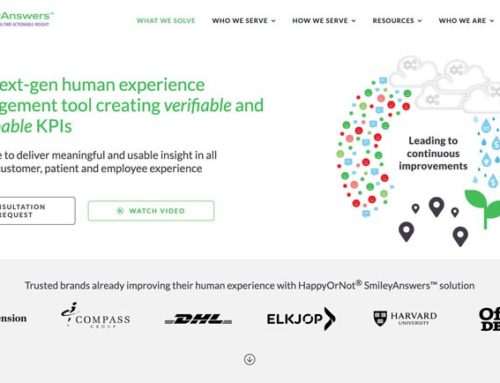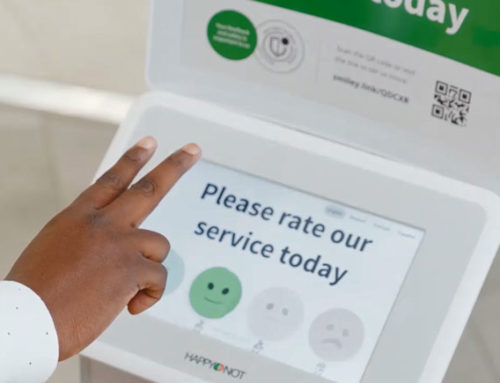As competition increases for both customers and employees, having the pulse of individual perceptions will continue to become more important each passing year. Organizations are putting a larger amount of resources into customer service, which is raising the level of service customers will expect in the future. These rising expectations from customers puts more pressure on organizations to raise the bar again for continued high performance. With new advances in technology being developed and deployed, this also adds to the customer expectation equation. This continuous loop will be a challenge for many organizations to keep up with in the coming years.
From the employee side, the competition to find and maintain quality employees will also be a top priority for organizations. Research continues to show that happy employees make happy customers. Measuring and improving employee engagement and employee satisfaction will separate the organizations that want to lead their field in high quality experiences for customers and employees.
Measuring real-time perceptions
Whether it is a customer perception, an employee perception, or both, having a way to measure positive or negative experiences is vital to understanding how individuals perceive your organization. Having yearly or long breaks between surveys will not be the standard going forward. Being on top of perceptions in real time will soon become the norm as organizations in various categories compete for more customers and top talent. Having the ability to measure what is outside awareness will become necessary to make the quick changes needed to improve customer and employee experiences. As service continues to become what separates businesses, the customer and employee centric organizations will have the pulse of individual perceptions to be on top of changing expectations and find creative ways to innovate and be the leader in customer service and where employees want to work.
Giving people a voice
Leading organizations know that as expectations rise for both customers and employees, having an avenue where individuals can provide their voice will also be a way for businesses to separate themselves from the pack. People want to be heard and they want to know that their opinion matters and that their feedback is being used to improve their experience. By allowing for simple and easy feedback at various touchpoints, individuals will see that the organization truly does want their voice to be heard. By making positive changes and sharing what you have accomplished, you are also showing that an individual voice does matter. By showing that your organization does care what customers and employees think, you are building trust. In an age of rising uncertainty and stress, trust is a valuable commodity to have and maintain.
Allowing people to be anonymous
It is tempting from an organizations perspective to want to know which customer and employee gave the feedback, learn every opinion they have, and to know as much detail about their personal information as possible. Two immediate challenges come into play to counter this temptation. The first is the energy required by an individual to go through all these extra steps to give an organization all this detail. Businesses continue to throw more and more advertisements and surveys at customers. Add to this the higher stress felt by an individual to be more productive with less time and resources. This combination is a recipe for customers to preserve energy and avoid giving businesses their attention and feedback. It is becoming more challenging each year for organizations to capture the time of current and potential customers.
The second challenge is the ability to express what a person truly feels about an experience. Being anonymous allows an individual to express their point of view and not feel that their viewpoint will be coming back to haunt them. Consider the case of an employee, if they know that their boss will see the feedback given, the information will most likely be skewed as an individual certainly does not want to jeopardize their livelihood. If an organization truly wants to make positive changes by accepting negative feedback, allowing for anonymous feedback will be a part of that strategy.
SmileyAnswers for measuring customer and employee perceptions in real-time
With the HappyOrNot® Reporting System provided by SmileyAnswers, your organization will have access to real-time feedback to collect perceptions that currently exist outside your awareness. By helping you have a simple and easy way for your customers and employees to provide real-time feedback, your organization will have a higher quality data set that reflects the pulse of experiences that exist for your company. By allowing individuals to give their voice at the point of experience, your organization can make faster changes to show that you’re a leader in your space. As you collect feedback anonymously, your
Wrapping it up
There are just certain trends that are in place now that should be monitored. A few of these include:
- Customer and employee expectations continue to rise
- Competition for customers and employees will have more companies seeking real-time feedback
- Customers and employees will continue to want to have their voices heard
- Stress on customers and employees will increase over time
- Customers and employees will see more advertisements, surveys, and demand for their attention
- Simple, anonymous, and IN experience feedback will become more valued by individuals as they experience the above listed trends
Let SmileyAnswers help you collect feedback in real-time with a simple and easy format that allows your organization to make quick changes to pain points and provide a way to repeat and share success stories to both your customers and employees. Do not let any more time go by where you are not on top of how customers and employees see your organization. Contact SmileyAnswers today to see how the four Smileys from HappyOrNot® can be your Smiley Answer to the challenges that you face today and in the future.




